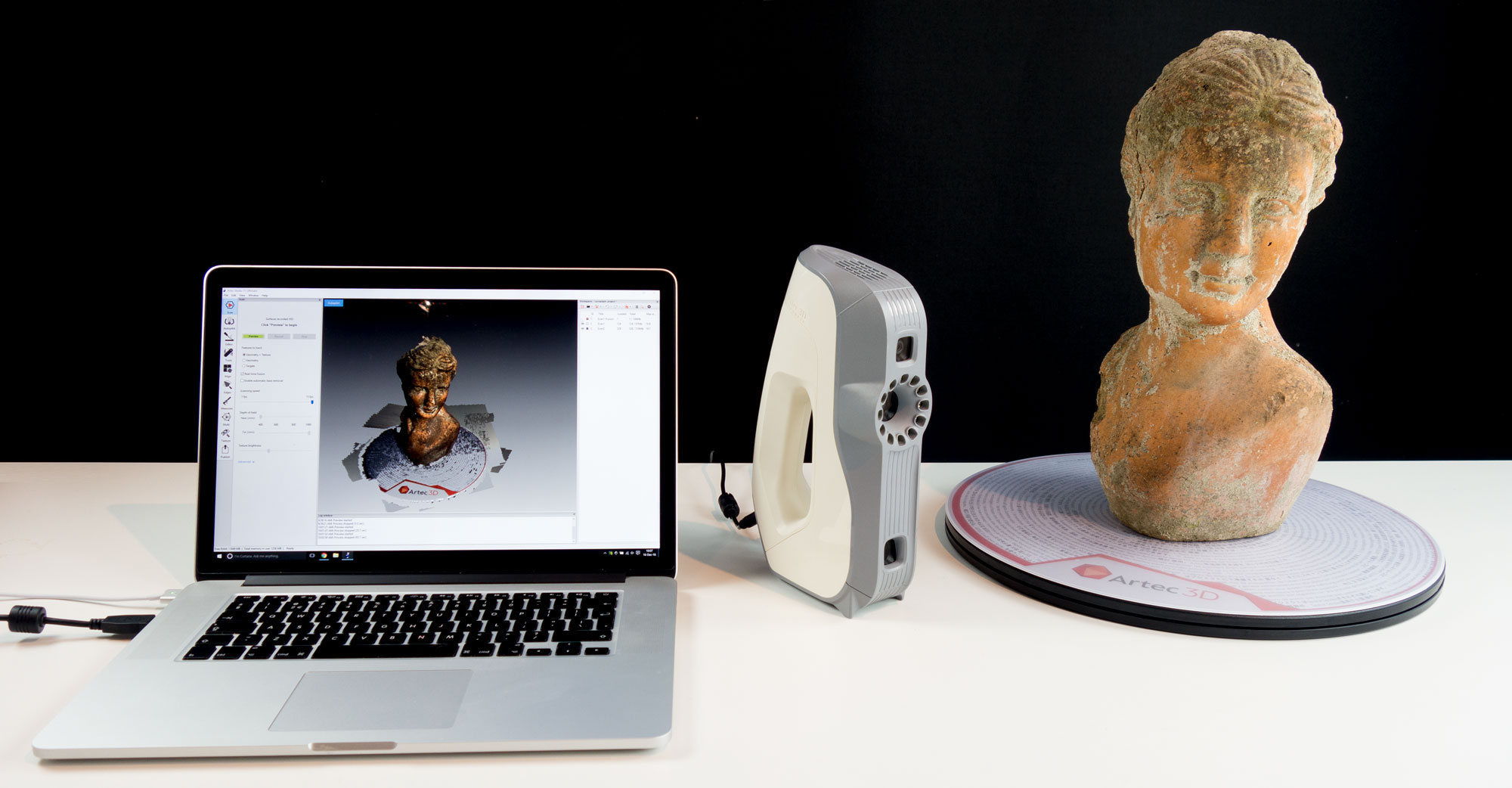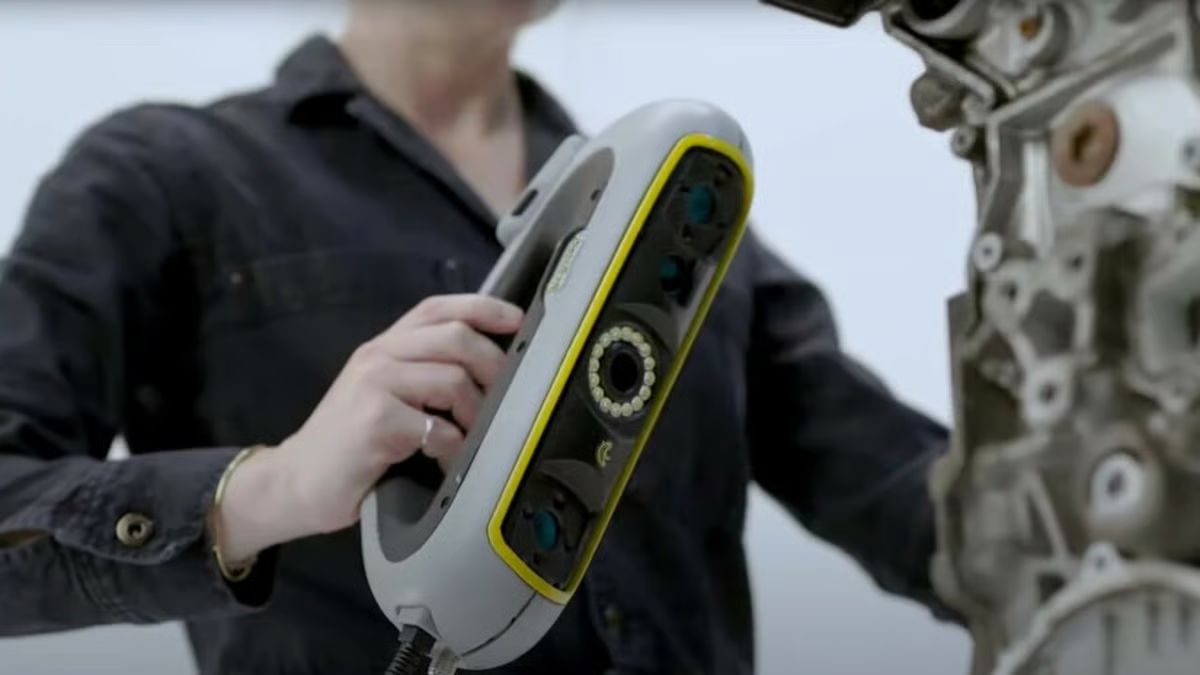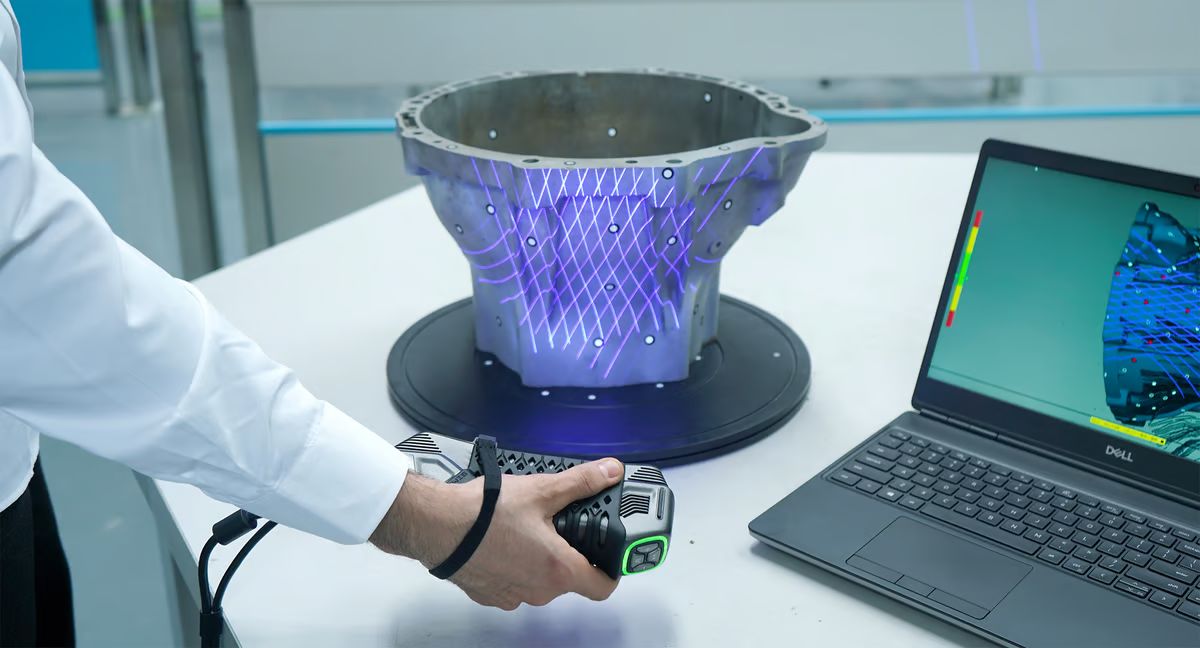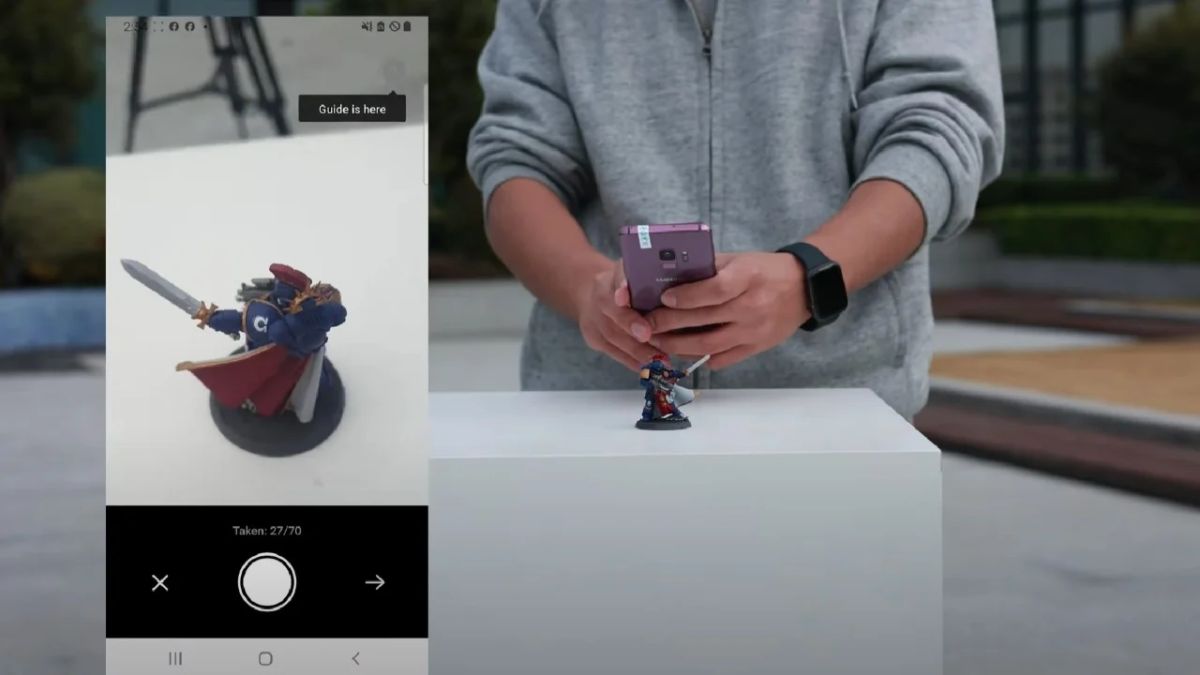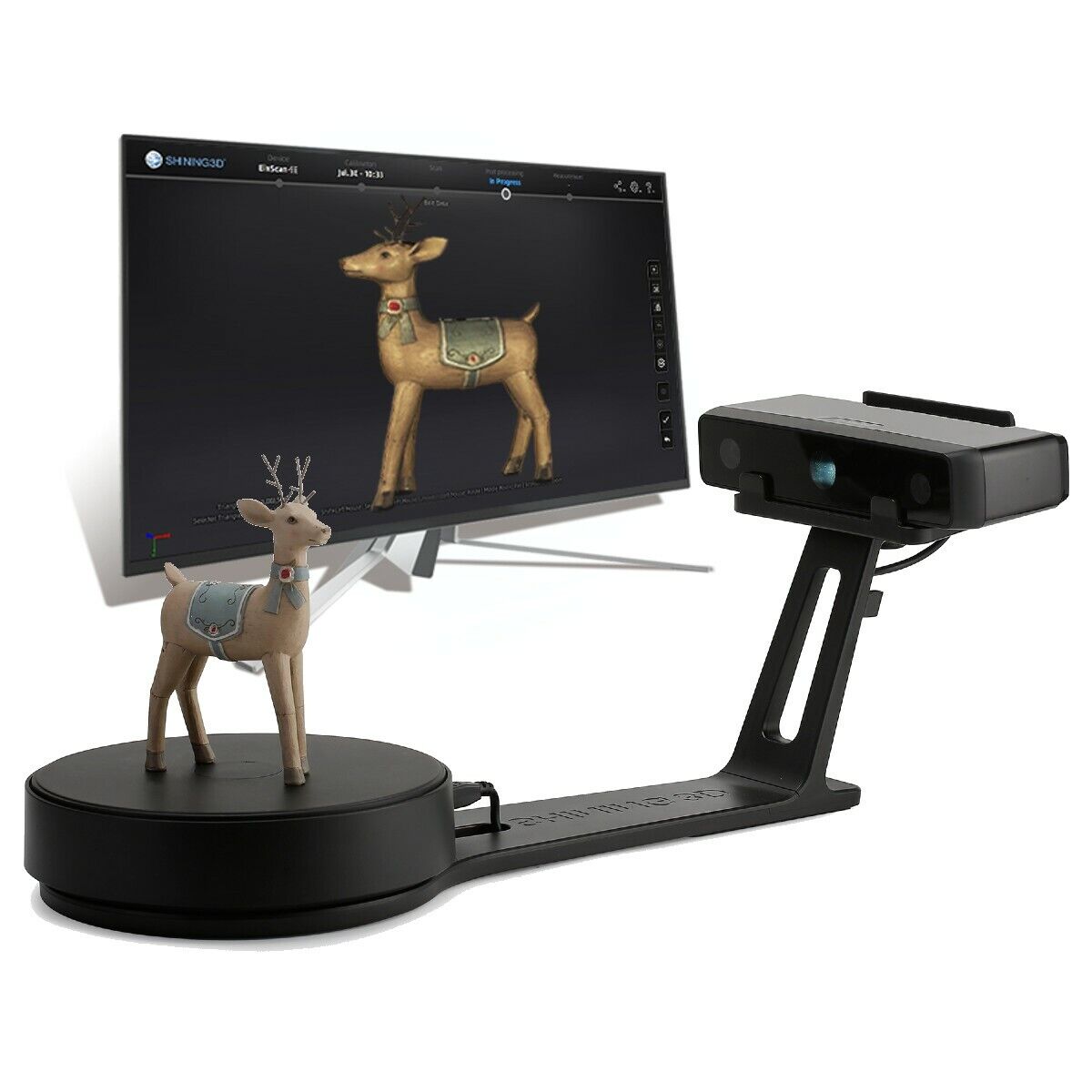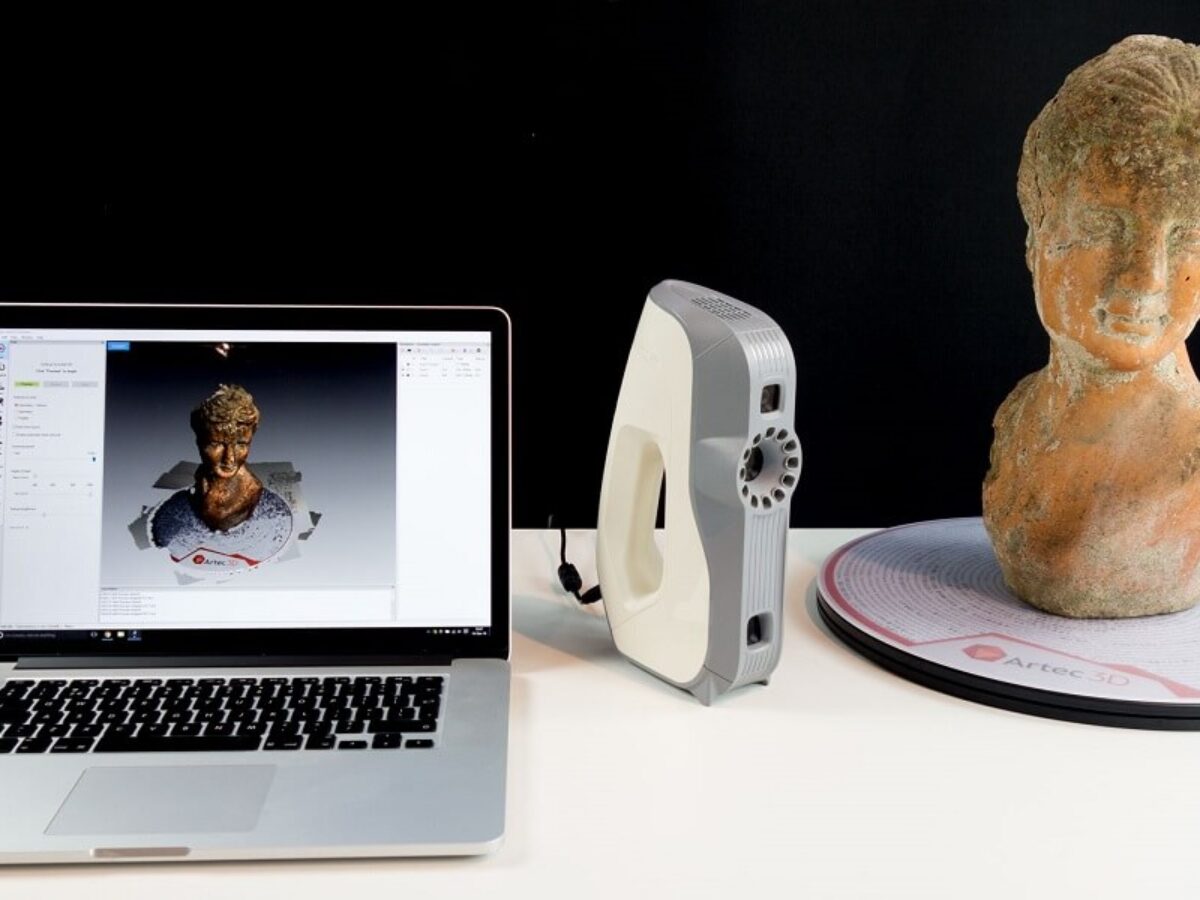Introduction
Welcome to the world of 3D scanner software, where advanced technologies like Sharp Fusion are revolutionizing the way we capture and process three-dimensional data. Whether you’re a professional in the field of design, manufacturing, or even art, having access to accurate and high-quality 3D scans is crucial for creating precise models and bringing imagination to life.
Sharp Fusion is a powerful feature found in many cutting-edge 3D scanner software applications. It combines sophisticated algorithms and intelligent image processing techniques to refine the output of 3D scans, resulting in incredibly detailed and realistic representations of objects or environments. This innovative technology takes the raw data captured by a 3D scanner and enhances it through a series of computational steps, enhancing the overall quality and accuracy of the final results.
But how does Sharp Fusion truly work, and what benefits does it bring to the table? In this article, we will delve into the inner workings of this remarkable feature and explore its practical applications.
So, if you’re ready to unlock the full potential of your 3D scanner software and take your designs to the next level, join us as we demystify Sharp Fusion and uncover its secrets.
What is Sharp Fusion?
Sharp Fusion is a sophisticated image processing algorithm that is integrated into 3D scanner software. It is designed to refine and enhance the output of 3D scans by improving their overall quality and accuracy. This cutting-edge technology takes the raw data captured by a 3D scanner and applies complex computations to produce incredibly detailed and realistic representations of objects or environments.
The primary goal of Sharp Fusion is to eliminate any imperfections or errors that may be present in the initial scan data. It achieves this by intelligently analyzing the captured information, identifying inconsistencies, and then applying corrective measures to create a seamless and refined 3D model.
One of the features that sets Sharp Fusion apart is its ability to precisely merge multiple scans into a single cohesive model. This is particularly useful in situations where capturing the entire object in a single scan is not possible due to its size or complexity. By intelligently aligning and merging multiple scans, Sharp Fusion enables users to create complete and accurate 3D representations.
Furthermore, Sharp Fusion employs advanced surface reconstruction techniques to ensure the generated 3D models have smooth and accurate surfaces. It eliminates any noise, artifacts, or distortions that may be present in the initial scans, resulting in a final model that is visually appealing and true to the original object.
Another impressive aspect of Sharp Fusion is its ability to handle challenging scanning scenarios. It can effectively handle shiny or reflective surfaces, transparent objects, or complex geometries that may pose difficulties for other scanning technologies. With its advanced algorithms, Sharp Fusion can capture even the most intricate details, ensuring no information is lost in the scanning process.
Overall, Sharp Fusion brings a new level of precision and realism to 3D scanning. By leveraging advanced image processing techniques, it significantly improves the quality and accuracy of scanned objects, enabling professionals in various fields to create stunning and accurate 3D models.
How Does Sharp Fusion Work?
Sharp Fusion utilizes intricate algorithms and advanced image processing techniques to enhance the quality and accuracy of 3D scans. Let’s take a closer look at how this innovative technology works:
1. Alignment: The initial step in Sharp Fusion involves aligning multiple scans of an object or environment. This is necessary when capturing large or complex objects that cannot be fully scanned in a single pass. The algorithm intelligently analyzes the scans and aligns them to create a complete and accurate 3D model.
2. Fusion: Once the scans are aligned, Sharp Fusion merges the data from each scan to create a unified and seamless 3D model. This fusion process ensures that no information is lost, and the final model accurately represents the shape and details of the object.
3. Surface Reconstruction: Sharp Fusion employs advanced surface reconstruction techniques to create smooth and accurate surfaces in the 3D model. It removes any noise, artifacts, or distortions present in the initial scans, resulting in a high-fidelity representation of the scanned object.
4. Noise Reduction: This step focuses on minimizing any noise or imperfections in the scanned data. Sharp Fusion analyzes the scans and applies noise reduction algorithms, effectively eliminating unwanted elements and enhancing the overall quality of the final model.
5. Texture Mapping: To add an extra level of realism, Sharp Fusion can apply texture mapping to the 3D model. This process involves projecting the colors captured during the scanning process onto the model’s surface, bringing it to life with accurate textures and colors.
6. Quality Assessment: As a final step, Sharp Fusion assesses the quality of the 3D model and ensures it meets predefined criteria. If any issues or inconsistencies are identified, the algorithm can automatically make adjustments and refinements to further enhance the model’s fidelity.
By combining these steps and leveraging advanced computational techniques, Sharp Fusion achieves impressive results in refining and enhancing the quality of 3D scans. It effectively transforms raw scan data into highly accurate, detailed, and visually appealing 3D models.
Benefits of Using Sharp Fusion in 3D Scanner Software
The integration of Sharp Fusion into 3D scanner software brings a multitude of benefits to users in a variety of industries. Let’s explore some of the key advantages of utilizing this advanced image processing technology:
1. Improved Accuracy: Sharp Fusion significantly enhances the accuracy of 3D scans by eliminating errors and imperfections in the raw data. The algorithm aligns and merges multiple scans, ensuring a cohesive and precise representation of the scanned object. This level of accuracy is essential in fields such as architecture, product design, and quality control.
2. Enhanced Quality: By employing advanced surface reconstruction techniques and noise reduction algorithms, Sharp Fusion elevates the overall quality of 3D models. It eliminates noise, artifacts, and distortions, resulting in smooth surfaces and visually appealing representations of the scanned objects.
3. Time Efficiency: Utilizing Sharp Fusion streamlines the scanning process and reduces the need for manual post-processing. The algorithm automatically aligns and merges scans, saving time and effort for users. This allows professionals to focus more on their creative work, reducing the overall time required to generate accurate and high-quality 3D models.
4. Handling Challenging Scenarios: Sharp Fusion is designed to handle complex scanning situations effectively. It can capture challenging objects such as shiny or reflective surfaces, transparent materials, or intricate geometries. With its advanced algorithms, Sharp Fusion ensures that even the most difficult objects can be accurately scanned, providing a versatile solution for a wide range of scanning needs.
5. Realistic Textures: The texture mapping feature of Sharp Fusion adds an extra layer of realism to 3D models by projecting the captured colors onto the surfaces. This creates visually stunning models that accurately represent the scanned objects, making them more immersive and engaging.
6. Broad Applications: The benefits of Sharp Fusion extend to multiple industries and applications. Whether it’s architectural design, industrial manufacturing, art and sculpture, or even heritage preservation, Sharp Fusion provides professionals with the tools they need to create accurate and detailed 3D models for their specific needs.
In summary, integrating Sharp Fusion into 3D scanner software offers numerous advantages, including improved accuracy, enhanced quality, time efficiency, the ability to handle challenging objects, realistic textures, and broad application versatility. These benefits empower professionals in various fields to leverage advanced image processing techniques and achieve exceptional results in their 3D scanning endeavors.
Examples of Sharp Fusion in Action
Let’s take a look at some real-world examples of how Sharp Fusion has been applied in 3D scanner software to create stunning and accurate 3D models:
- Architectural Design: Architects can use Sharp Fusion to capture precise 3D scans of existing structures or landscapes. By merging multiple scans and applying surface reconstruction, the software can create detailed models that aid in designing renovations or showcasing architectural concepts.
- Product Development: Sharp Fusion plays a vital role in product design and development. By scanning prototypes and finalized designs, engineers can use Sharp Fusion to create accurate 3D models. These models can be further refined and analyzed to identify potential issues, make improvements, and visualize the final product before manufacturing.
- Heritage Preservation: Sharp Fusion enables the preservation of cultural heritage by creating high-fidelity digital replicas of historical artifacts or architectural landmarks. By scanning and processing intricate details, such as carvings or delicate structures, Sharp Fusion helps capture and preserve the essence of these valuable assets.
- Art and Sculpture: Artists and sculptors can utilize Sharp Fusion to create precise virtual replicas of their physical creations. By scanning the artwork and applying the algorithm’s refinement techniques, artists can generate accurate digital models for documentation or digital exhibition purposes.
- Industrial Manufacturing: Sharp Fusion has applications in industrial manufacturing processes. It can be used to scan complex machine parts or components for quality control purposes, ensuring that the manufactured parts meet precise specifications and tolerances.
These are just a few examples of how Sharp Fusion is applied across various industries. The flexibility and accuracy of this technology enable professionals to capture detailed scans, refine them with precision, and create highly realistic and accurate 3D models.
Conclusion
Sharp Fusion has emerged as a game-changer in the world of 3D scanner software, offering unparalleled accuracy, quality, and versatility. With its advanced image processing algorithms, Sharp Fusion enables users to create highly detailed and realistic 3D models that accurately represent the scanned objects or environments.
By aligning and merging multiple scans, Sharp Fusion eliminates errors and imperfections, resulting in cohesive and precise 3D models. The technology’s ability to handle challenging scanning scenarios, such as shiny or reflective surfaces, transparent objects, or complex geometries, makes it an invaluable tool for professionals in various fields.
What sets Sharp Fusion apart is its focus on enhancing the overall quality of 3D scans. Through surface reconstruction, noise reduction, texture mapping, and quality assessment, Sharp Fusion ensures that the final models have smooth surfaces, realistic textures, and minimal imperfections, making them visually stunning and true to the original objects.
The benefits of Sharp Fusion extend beyond just improved accuracy and quality. By streamlining the scanning process and reducing the need for manual post-processing, Sharp Fusion saves time and allows professionals to focus more on their creative work. Furthermore, its broad application across industries, such as architecture, product development, heritage preservation, art, and industrial manufacturing, highlights the versatility and versatility of this advanced image processing technology.
In conclusion, Sharp Fusion revolutionizes 3D scanner software by pushing the boundaries of accuracy, quality, and efficiency. It empowers professionals to capture highly detailed and realistic 3D models, unlocking new possibilities in design, manufacturing, heritage preservation, and more. With Sharp Fusion, the power of 3D scanning reaches new heights, paving the way for groundbreaking applications in various fields.







